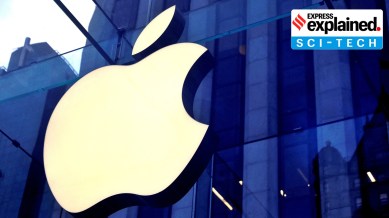Apple Inc. has dropped its decade-long effort to build an electric self-driving car. Jeff Williams, Chief Operating Officer, and Kevin Lynch, a vice president of technology who headed the car project at the Cupertino-based tech major, have made the announcement internally, Bloomberg reported.
There is speculation that the project, codenamed Project Titan, was jettisoned so Apple can intensify focus on its other big bets, including generative AI and mixed-reality headsets.
But it is also likely that Apple’s decision was prompted by new realities of the market: as vehicles go from being heavily-engineered, mechanical devices with hundreds of moving parts to software-driven contraptions with fewer than two dozen moving parts, a car is now much more about software than hardware. This situation is very different from 2014, when Apple kicked off its electric car project.
Importance of software
The electrification of vehicles, accompanied by a growing demand for advanced safety features, has meant higher integration of components, and software will define the next phase of growth for tier 1 suppliers (companies that supply parts or systems directly to original equipment manufacturers — or carmakers — in the automotive industry).
With the shift to electrics, computing and software are now at the heart of the vehicle, with a central processor managing the battery, running the electric motors and generators, and other vital systems. This is where Apple already has an edge — the increasing trend in favour of smartphone integration platforms such as Apple CarPlay and Android Auto has changed the way people interact with their vehicles.
About 98% of new cars in the US support either Apple CarPlay or Android Auto. These smartphone integration platforms have become a must-have feature for nearly 80 per cent of new car buyers, according to Straits Research.
According to tech analyst Marques Brownlee, Apple “has realised they don’t need to make a whole car to control the entire car software experience… Car manufacturers are so bad at software that everyone just puts CarPlay on anyway”.
Story continues below this ad
Strength of Apple CarPlay
CarPlay and Android Auto allow drivers to integrate their smartphones with the vehicle’s infotainment system. Apple had introduced CarPlay in 2014 as a way to integrate the iPhone and a car’s dashboard. Over the years, it has managed to insert itself between customers and car companies and make sure that its interface is the one that every iPhone user wants while driving.
For the customer, CarPlay intended to connect iPhones to a car’s infotainment screen, offering a more seamless experience for maps, driving information and connections to smartphone apps by taking over the screens in cars.
While CarPlay does not contribute directly to Apple revenues or profits, it adds to the loyalty of iPhone users and, more importantly, gives Apple control over the data of drivers, which is already emerging as a problem area for legacy automakers.
But this is likely to change with the next generation of CarPlay, which promises to offer content for all the driver’s screens, including the instrument cluster. Vehicle functions such as radio and temperature controls can be handled from CarPlay, and personalisations ranging from widgets to selecting curated gauge cluster designs can be made using the Apple software.
Story continues below this ad
Going forward, there could be more integration of software, including vehicle telematics that allow for the collection of a variety of vehicular data on a centralised system to boost performance and safety, and possibly even Advanced Driver Assistance Systems (ADAS), which use a combination of sensors, lidar (light detection and ranging), radar, and cameras to improve safety by assisting the driver with feedback and prompts.
More than 80% of new cars sold in the US now support CarPlay, Apple said last year, which works out to about 800-odd new models. The success of CarPlay was one of the reasons why the auto sector was keenly tracking Apple’s plans to build its own car.
Rising consumer demand
Connectivity solutions and in-car digital offerings such as entertainment and advanced hazard warnings are expected to play an increasingly important role in the mobility experience of the future. Many of these features are already in demand, and the market is growing, the consulting company McKinsey & Co. said in a September 2023 update on an earlier consumer-focused study.
By 2030, core connectivity use cases such as gaming and over-the-air upgrades could deliver $250 billion to $400 billion in annual incremental value for players across the mobility ecosystem, it said.
Story continues below this ad
The McKinsey survey data on the need for smartphone integration, preferred services and payment options, data privacy concerns, and regional trends, showed that about 50% of car owners want to use connectivity solutions and in-car digital offerings more in the future. EV buyers were most open to these services, with about 69% planning to increase their use of connectivity solutions compared with 47% of buyers who intended to purchase traditional cars.
Almost half of car buyers said they would not purchase a vehicle that did not have Apple CarPlay or Android Auto. Forty-five per cent of owners who have Apple CarPlay or Android Auto said they used the service regularly; another 40% connected periodically; and 85% said they preferred it over the built-in system provided by the carmaker.
Amid this transition, software is proving to be the weak link for legacy automakers — for instance, Volkswagen AG, the world’s second-biggest carmaker, has had to put off new vehicle launches because of software glitches.
In response, carmakers are ramping up software hirings — Japan’s Honda Motor plans to double the number of software programmers it employs over the next seven years to around 10,000 by 2030, according to a Nikkei report. This would involve deepening its partnership with Pune-based software company KPIT Technologies, alongside building its own software engineering team.
Story continues below this ad
Similarly, Amsterdam-headquartered Stellantis, the world’s fourth largest automaker, plans to hire more than 1,000 software engineers in India by 2025, including for its autonomous vehicle plans.
